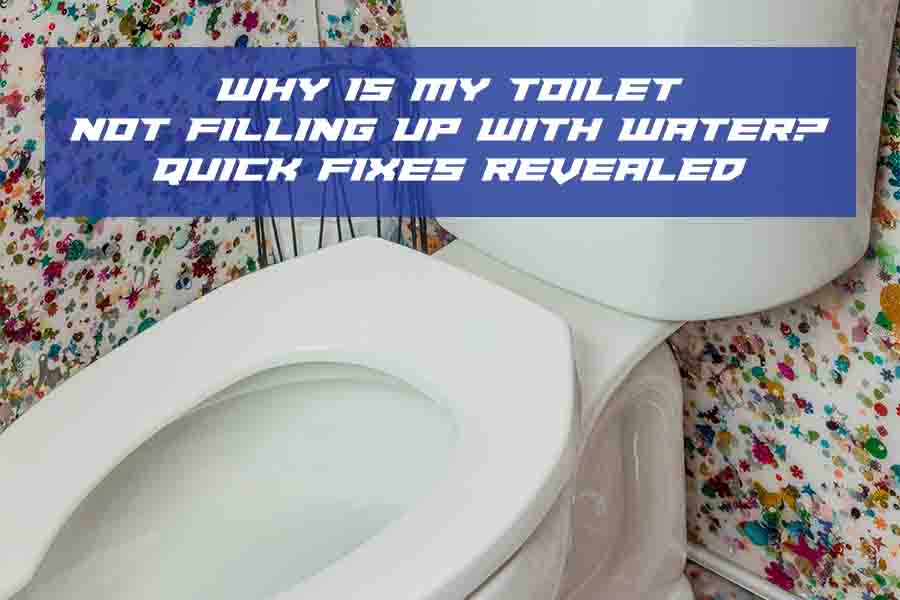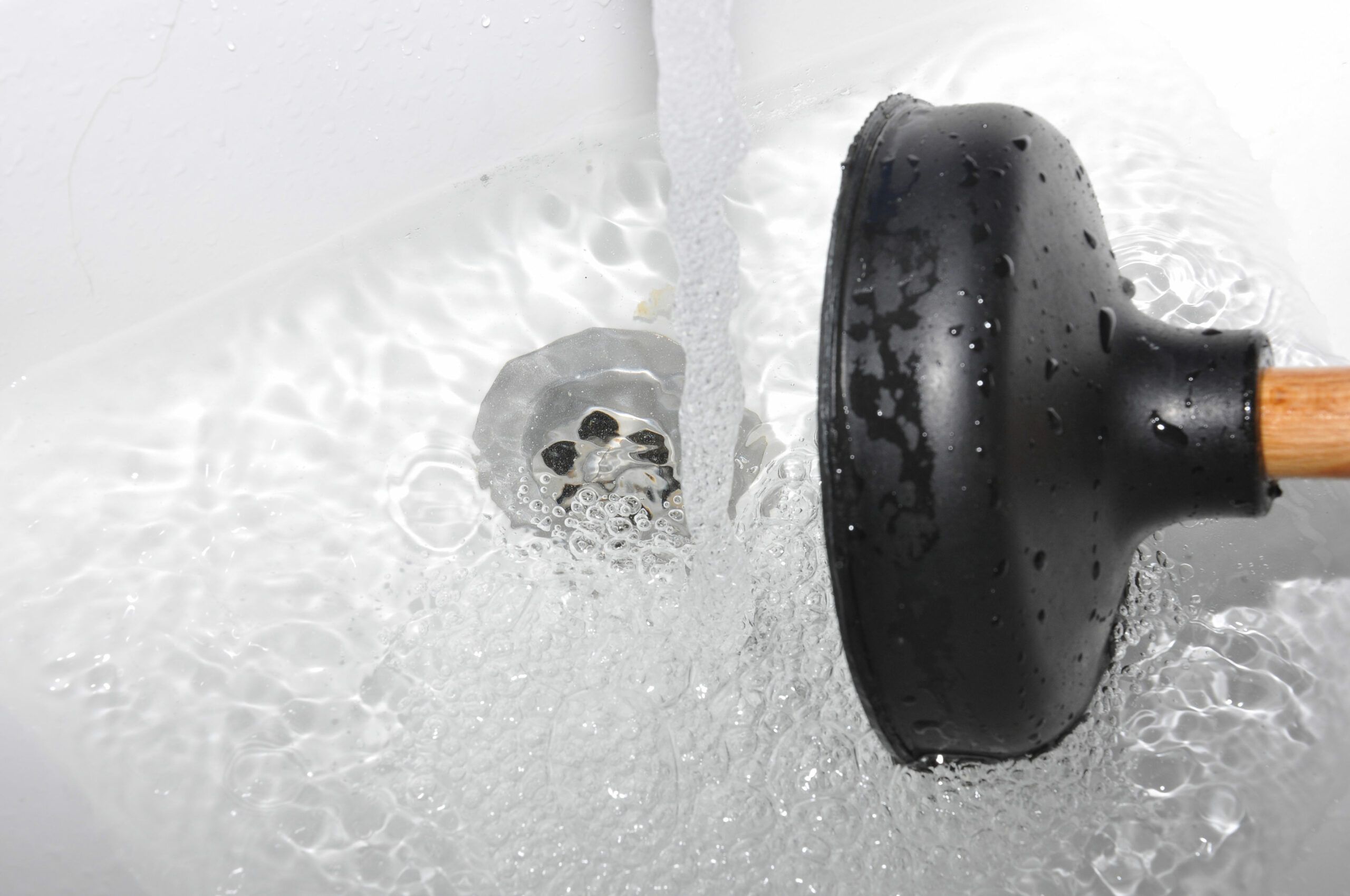
Your toilet may not be filling up due to a closed supply valve or a malfunctioning fill valve. Issues with the float mechanism or blockages in the water supply can also cause this problem.
A well-functioning toilet is essential in any household, and interruptions in its operation can cause significant inconvenience. Understanding the common reasons behind a toilet’s failure to refill can save time and frustration. Ensuring that the water supply valve is open is a simple first check.
The fill valve, responsible for regulating water flow into the toilet tank, often becomes worn or clogged, requiring cleaning or replacement. The float mechanism, which gauges water level in the tank, might need adjustment or may be hindered by debris. Tackling these issues promptly can restore proper function to your toilet, maintaining the hygiene and convenience of your home.
Common Causes For Low Water Levels In Toilets
Is your toilet not filling up with water as it should? A few reasons might be behind this frustrating issue. Let’s dive into the common culprits to help you troubleshoot effectively.
Valve Malfunctions
Water supply valves control the flow into your toilet tank. If the valve is turned off or malfunctioning, water won’t fill the tank properly. Some quick checks can help determine if this is the problem:
- Ensure the shut-off valve near the toilet is fully open.
- If the valve is open, it might be faulty or stuck.
- A replacement or repair may be necessary.
Issues With The Fill Tube
A fill tube refills the toilet tank after a flush. Problems here can cause low water levels. Here’s what to look for:
- Check if the fill tube is attached and has no damage.
- Ensure the tube’s end is above the water level.
- Adjust the tube or replace it if damaged.

Credit: www.thisoldhouse.com
Inspecting The Fill Valve For Proper Operation
A toilet that doesn’t fill up with water is like a car without fuel.
It simply won’t function. The fill valve, the heart of the refilling process,
often holds the key to this problem. A thorough inspection can reveal if the fill valve
is at fault and guide the next steps to solve the issue. Understanding how to check
and adjust this critical component is essential for a smoothly running toilet.
Adjusting The Valve Settings
Start by removing the toilet tank lid and
placing it away carefully. Look for the fill valve. It’s usually a tall mechanism
attached to a float. The fill valve controls the water level.
For proper adjustment, follow these steps:
- Locate the adjustment screw or rod on the valve.
- Turn the screw clockwise to raise the water level.
- Turn it counterclockwise to lower the level.
- Flush your toilet to test the new setting.
- Readjust as needed for the perfect water level.
Pro Tip: Always adjust in small increments to avoid overfilling.
Replacing A Faulty Fill Valve
If adjusting doesn’t help, replacement might be your next step.
A faulty valve doesn’t regulate water flow correctly.
Here’s a simplified step-by-step guide to replacing it:
- Shut off the toilet’s water supply.
- Drain the tank by flushing the toilet.
- Disconnect the water supply line from the valve.
- Remove the old fill valve.
- Install the new valve and reconnect the water line.
- Turn the water supply back on and adjust the new valve.
Remember: Ensure compatibility between your toilet and the new fill valve.
Use a manufacturer-recommended model for the best results.
The Impact Of Water Pressure On Toilet Performance
The Impact of Water Pressure on Toilet Performance
A toilet that doesn’t fill up can cause frustration. Water pressure plays a crucial role in how well your toilet operates. Proper pressure ensures efficient flushing and refilling of the tank. Low pressure might leave the tank partly empty, affecting the flush. This section explores how home water pressure impacts your toilet and what you can do about it.
Checking Your Home’s Water Pressure
Determining the water pressure is the first step. It’s simple to check and helps you understand the issue better. Here’s how:
- Find your water meter.
- Locate the pressure gauge; it should be near the meter.
- Read the gauge. Normal pressure ranges from 40-60 psi.
If the reading is low, it might explain the toilet fill issue.
Solutions For Improving Low Water Pressure
There are practical steps to boost your toilet’s water pressure.
- Check for closed shut-off valves and open them.
- Clean faucet aerators and showerheads to remove blockages.
- Inspect pipes for leaks or damage.
- Consider a water pressure booster.
Professional help can be vital in cases of persistent low pressure. Plumbers can identify and fix complex issues.
Troubleshooting The Flush Mechanism Components
A toilet that won’t fill with water is a common and frustrating issue. Understanding the flush mechanism is key to fixing it. This system includes several parts that can be the culprit. By examining these components, you can often solve the problem without a plumber’s help.
Float Ball And Arm Adjustments
The float ball and arm control the water level in your toilet tank. If they’re out of place, the tank won’t fill properly. Follow these steps:
- Check the float ball for any signs of damage or cracking.
- Adjust the arm bend to raise or lower the ball.
- Test the toilet flush; if the tank fills, you’ve solved it!
Note: Some models use a float cup instead of a ball. Adjust the screw on top of the fill valve to tweak the water level.
Examining The Flapper For Leaks
A leaky flapper is a common cause of fill issues. Follow these steps to examine it:
- Turn off the water and flush the toilet to empty the tank.
- Inspect the flapper for wear or warping.
- Press down on the flapper. If the tank starts filling, it’s likely the issue.
Replace a worn flapper with a new one for a better seal. This should restore the fill function.
When To Call A Professional Plumber
Your toilet not filling up with water usually signals a minor issue. Sometimes, a quick fix is all it takes. Yet, there are moments when the problem runs deeper. Recognizing these signs is crucial. It can save you both time and money. Contact a professional plumber if your DIY solutions fail to work or you’re uncertain about the nature of the problem.
Complex Issues Requiring Expertise
Plumbing systems can be intricate. Specialized knowledge is often required. Seek professional help in these scenarios:
- Strange noises or vibrations when the toilet is filling.
- Inconsistent water levels that fluctuate without reason.
- Water supply line issues, like cracks or blockages.
- Persistent or recurring problems, even after fixes.
Benefits Of Professional Maintenance
Regular professional maintenance keeps your toilet running smoothly. Benefits include:
- Expert diagnosis of underlying issues.
- Prevention of future, costlier problems.
- Longevity for your toilet and plumbing system.
- Peace of mind with guaranteed workmanship.

Credit: insideclimatenews.org
Frequently Asked Questions For Why Is My Toilet Not Filling Up With Water
Why Won’t My Toilet Tank Refill?
When a toilet tank won’t refill, the issue might be a faulty fill valve. This valve controls the water flow into the tank. It can become obstructed with sediment or wear out over time, requiring replacement or cleaning to restore proper function.
What Causes Low Water Levels In Toilets?
Low water levels in a toilet can be due to a partially closed shutoff valve. Ensure it’s fully open. Another reason may be a clogged vent pipe, affecting the flushing and filling process. A professional plumber can resolve vent pipe issues.
How Do I Fix A Slow-filling Toilet?
To fix a slow-filling toilet, start by inspecting the fill valve for blockages and clean if needed. Adjust the valve if it’s not fully open. Also, check for leaks in the tank that could be hindering the filling process.
Can A Flapper Issue Affect Toilet Refilling?
Yes, a malfunctioning flapper can affect toilet refilling. If it doesn’t seal properly, water will leak from the tank into the bowl, lowering the tank’s refill rate. Replace the flapper if it’s warped or damaged to ensure a proper seal.
Conclusion
Understanding the reasons behind your toilet’s refill issue is crucial for a functioning bathroom. From checking the water valve to inspecting the float, take action to resolve the problem. Remember that a DIY fix can save time and money, but don’t hesitate to call a plumber for persistent issues.
Regular maintenance keeps your toilet in top shape, preventing future inconveniences.




















